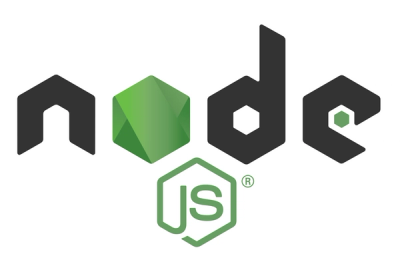
Security News
RubyGems.org Adds New Maintainer Role
RubyGems.org has added a new "maintainer" role that allows for publishing new versions of gems. This new permission type is aimed at improving security for gem owners and the service overall.
org.elasticsearch.plugin:analysis-kuromoji
Advanced tools
= Elasticsearch
Elasticsearch is a distributed search and analytics engine, scalable data store and vector database optimized for speed and relevance on production-scale workloads. Elasticsearch is the foundation of Elastic's open Stack platform. Search in near real-time over massive datasets, perform vector searches, integrate with generative AI applications, and much more.
Use cases enabled by Elasticsearch include:
... and more!
To learn more about Elasticsearch's features and capabilities, see our https://www.elastic.co/products/elasticsearch[product page].
To access information on https://www.elastic.co/search-labs/blog/categories/ml-research[machine learning innovations] and the latest https://www.elastic.co/search-labs/blog/categories/lucene[Lucene contributions from Elastic], more information can be found in https://www.elastic.co/search-labs[Search Labs].
[[get-started]] == Get started
The simplest way to set up Elasticsearch is to create a managed deployment with https://www.elastic.co/cloud/as-a-service[Elasticsearch Service on Elastic Cloud].
If you prefer to install and manage Elasticsearch yourself, you can download the latest version from https://www.elastic.co/downloads/elasticsearch[elastic.co/downloads/elasticsearch].
=== Run Elasticsearch locally
////
IMPORTANT: This content is replicated in the Elasticsearch repo. See run-elasticsearch-locally.asciidoc.
Ensure both files are in sync.
https://github.com/elastic/start-local is the source of truth. ////
DO NOT USE THESE INSTRUCTIONS FOR PRODUCTION DEPLOYMENTS.
Quickly set up Elasticsearch and Kibana in Docker for local development or testing, using the https://github.com/elastic/start-local?tab=readme-ov-file#-try-elasticsearch-and-kibana-locally[`start-local` script].
ℹ️ For more detailed information about the start-local setup, refer to the https://github.com/elastic/start-local[README on GitHub].
==== Prerequisites
==== Trial license This setup comes with a one-month trial license that includes all Elastic features.
After the trial period, the license reverts to Free and open - Basic. Refer to https://www.elastic.co/subscriptions[Elastic subscriptions] for more information.
==== Run start-local
To set up Elasticsearch and Kibana locally, run the start-local script:
// NOTCONSOLE
This script creates an elastic-start-local folder containing configuration files and starts both Elasticsearch and Kibana using Docker.
After running the script, you can access Elastic services at the following endpoints:
The script generates a random password for the elastic user, which is displayed at the end of the installation and stored in the .env file.
localhost.==== API access
An API key for Elasticsearch is generated and stored in the .env file as ES_LOCAL_API_KEY.
Use this key to connect to Elasticsearch with a https://www.elastic.co/guide/en/elasticsearch/client/index.html[programming language client] or the https://www.elastic.co/guide/en/elasticsearch/reference/current/rest-apis.html[REST API].
From the elastic-start-local folder, check the connection to Elasticsearch using curl:
// NOTCONSOLE
=== Send requests to Elasticsearch
You send data and other requests to Elasticsearch through REST APIs. You can interact with Elasticsearch using any client that sends HTTP requests, such as the https://www.elastic.co/guide/en/elasticsearch/client/index.html[Elasticsearch language clients] and https://curl.se[curl].
==== Using curl
Here's an example curl command to create a new Elasticsearch index, using basic auth:
// NOTCONSOLE
==== Using a language client
To connect to your local dev Elasticsearch cluster with a language client, you can use basic authentication with the elastic username and the password you set in the environment variable.
You'll use the following connection details:
http://localhost:9200elastic$ELASTIC_PASSWORD (Value you set in the environment variable)For example, to connect with the Python elasticsearch client:
import os from elasticsearch import Elasticsearch
username = 'elastic' password = os.getenv('ELASTIC_PASSWORD') # Value you set in the environment variable
client = Elasticsearch( "http://localhost:9200", basic_auth=(username, password) )
==== Using the Dev Tools Console
Kibana's developer console provides an easy way to experiment and test requests. To access the console, open Kibana, then go to Management > Dev Tools.
Add data
You index data into Elasticsearch by sending JSON objects (documents) through the REST APIs. Whether you have structured or unstructured text, numerical data, or geospatial data, Elasticsearch efficiently stores and indexes it in a way that supports fast searches.
For timestamped data such as logs and metrics, you typically add documents to a data stream made up of multiple auto-generated backing indices.
To add a single document to an index, submit an HTTP post request that targets the index.
This request automatically creates the customer index if it doesn't exist,
adds a new document that has an ID of 1, and
stores and indexes the firstname and lastname fields.
The new document is available immediately from any node in the cluster. You can retrieve it with a GET request that specifies its document ID:
To add multiple documents in one request, use the _bulk API.
Bulk data must be newline-delimited JSON (NDJSON).
Each line must end in a newline character (\n), including the last line.
Search
Indexed documents are available for search in near real-time.
The following search matches all customers with a first name of Jennifer
in the customer index.
Explore
You can use Discover in Kibana to interactively search and filter your data. From there, you can start creating visualizations and building and sharing dashboards.
To get started, create a data view that connects to one or more Elasticsearch indices, data streams, or index aliases.
. Go to Management > Stack Management > Kibana > Data Views. . Select Create data view. . Enter a name for the data view and a pattern that matches one or more indices, such as customer. . Select Save data view to Kibana.
To start exploring, go to Analytics > Discover.
[[upgrade]] == Upgrade
To upgrade from an earlier version of Elasticsearch, see the https://www.elastic.co/guide/en/elasticsearch/reference/current/setup-upgrade.html[Elasticsearch upgrade documentation].
[[build-source]] == Build from source
Elasticsearch uses https://gradle.org[Gradle] for its build system.
Distributions are output to distribution/archives.
To run the test suite, see xref:TESTING.asciidoc[TESTING].
[[docs]] == Documentation
For the complete Elasticsearch documentation visit https://www.elastic.co/guide/en/elasticsearch/reference/current/index.html[elastic.co].
For information about our documentation processes, see the xref:docs/README.asciidoc[docs README].
[[examples]] == Examples and guides
The https://github.com/elastic/elasticsearch-labs[`elasticsearch-labs`] repo contains executable Python notebooks, sample apps, and resources to test out Elasticsearch for vector search, hybrid search and generative AI use cases.
[[contribute]] == Contribute
For contribution guidelines, see xref:CONTRIBUTING.md[CONTRIBUTING].
[[questions]] == Questions? Problems? Suggestions?
To report a bug or request a feature, create a https://github.com/elastic/elasticsearch/issues/new/choose[GitHub Issue]. Please ensure someone else hasn't created an issue for the same topic.
Need help using Elasticsearch? Reach out on the https://discuss.elastic.co[Elastic Forum] or https://ela.st/slack[Slack]. A fellow community member or Elastic engineer will be happy to help you out.
FAQs
Unknown package
We found that org.elasticsearch.plugin:analysis-kuromoji demonstrated a not healthy version release cadence and project activity because the last version was released a year ago. It has 0 open source maintainers collaborating on the project.
Did you know?

Socket for GitHub automatically highlights issues in each pull request and monitors the health of all your open source dependencies. Discover the contents of your packages and block harmful activity before you install or update your dependencies.

Security News
RubyGems.org has added a new "maintainer" role that allows for publishing new versions of gems. This new permission type is aimed at improving security for gem owners and the service overall.

Security News
Node.js will be enforcing stricter semver-major PR policies a month before major releases to enhance stability and ensure reliable release candidates.

Security News
Research
Socket's threat research team has detected five malicious npm packages targeting Roblox developers, deploying malware to steal credentials and personal data.